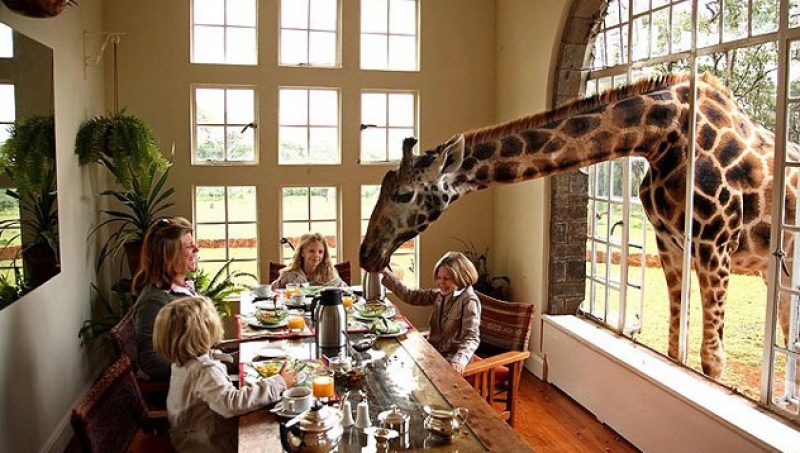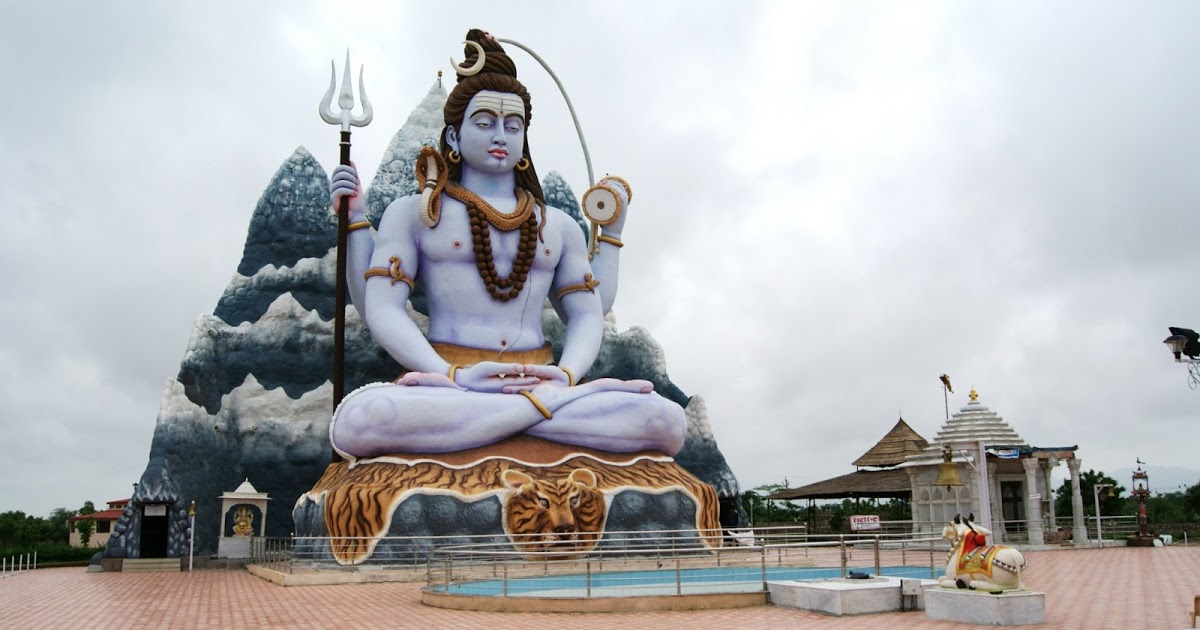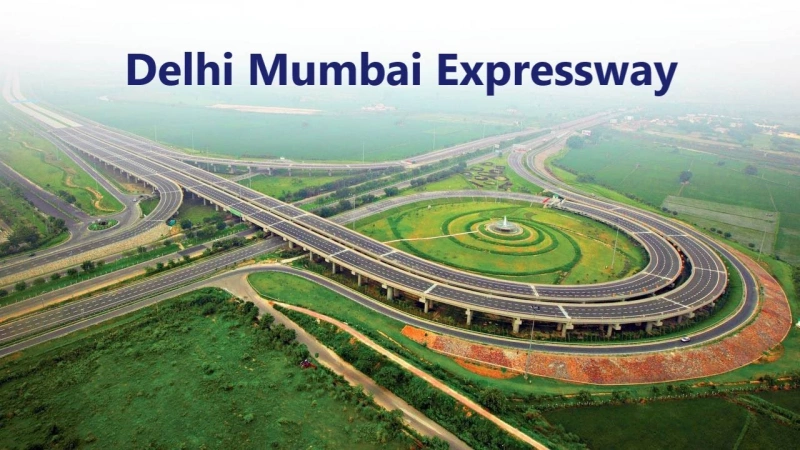
A Segment of the Delhi-Mumbai Expressway will open on 12th February 2023
Latest Update:
The Delhi Mumbai Expressway, one of the country's busiest roads, will be essential to improving the country's interstate highway system. The Agra-Gwalior Greenfield Expressway will be connected to the Delhi Mumbai Expressway, according to the most recent updates.The motorway would be linked to the Agra-Gwalior Greenfield Expressway in Kota by the Union Government. Additionally, the Bundelkhand Expressway in Etawah and the Agra Expressway in Lucknow will be linked to the Agra-Gwalior Greenfield Expressway.
The four-hour journey time from Delhi and Gwalior would be made possible by the connection of the Delhi–Mumbai Expressway to the Agra–Gwalior Greenfield Expressway. The Agra-Gwalior Greenfield Expressway will open to traffic in 2023, similar to the Delhi-Mumbai Expressway. The Agra-Gwalior Greenfield Expressway's development, however, is projected to be finished by the end of 2027.
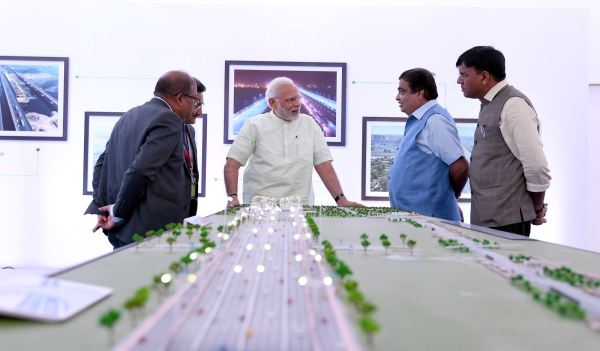
Delhi-Mumbai Expressway's Sohna-Dausa Section Will Be Open to the Public in February 2023:
According to recent sources, PM Modi will officially open the Sohna-Dausa section of the Delhi-Mumbai Expressway on February 12, 2023. After the official opening, it will be made available to travelers and will benefit in cutting the time it takes to travel from Delhi to Jaipur to two hours.“The Sohna-Dausa segment of the Delhi Mumbai Expressway, will be inaugurated by Prime Minister Shri Narendra Modi onFebruary 12th, would make it possible for commuters to travel from Delhi to Jaipur in only two hours. ” according to Union Minister Nitin Gadkari.
Updates on the Delhi-Mumbai Expressway are provided below:
The future Noida International airport will be connected to the Delhi Mumbai Expressway at Jewar. The DND flyway and the Faridabad-Ballabgarh bypass will both be connected by the link road.
The Delhi Mumbai Expressway will be connected at Surat by a motorway between Chennai and Surat that has been sanctioned by the Road and Transport Ministry.
The Delhi Vadodara segment of the Delhi Mumbai Expressway is anticipated to be completed by December 2022, according to NHAI officials.
The Delhi Mumbai Expressway project's original 2020 completion date was pushed back until January 26, 2023. Only by December 2023 is the current estimated completion date for the project.
The Delhi Mumbai Expressway's Sohna-Dausa section is scheduled to open to traffic on February 12, 2023.
On the Delhi Mumbai Expressway, the section from Alipur (Gurugram) to Dausa (Rajasthan) has more than 90% of its work finished.
Delhi-Mumbai Expressway:
The Delhi Mumbai Expressway, a brilliant government initiative, will link India's two largest monetary centers, the country's capital New Delhi and the country's industrial heartland Mumbai.The eight-lane motorway is the longest in the world and can be extended to twelve lanes counting on site visitors' demand.
Construction and upkeep of the Delhi-Mumbai Expressway are being handled by NHAI (National Highways Authority of India).By December 2023, the Delhi–Mumbai Expressway mission is anticipated to be completed, reducing the traveling among the two towns from 24 hours to 12 hours.
What is the purpose of the Delhi-Mumbai Expressway?
A 1350 km (8-lane) roadway called the Delhi Mumbai Expressway will cut the distance between India's two most important cities in half. Nitin Gadkari, the Union Minister for Road Transport & Highways, laid the cornerstone for the Delhi-Mumbai Expressway on March 9, 2019.
The Mumbai-Delhi motorway route will go through five states: Gujarat (426 km), Madhya Pradesh (244 km), Rajasthan (373 km), Haryana (129 km), and Maharashtra (426 km) (171 km).
For the construction of the Delhi to Mumbai motorway, more than 15,000 hectares of land were needed in these five states.The highway will begin in Haryana at Gurgaon and excursion through Rajasthan at Sawai Madhopur and Jaipur. After that, the road travels through the Madhya Pradesh cities of Ratlam and Vadodara until arriving at Mumbai, Maharashtra. Connectivity to major economies like Jaipur, Ajmer, Kishangarh, Kota, Udaipur, Chittorgarh, Bhopal, Ujjain, Ahmedabad, Indore, Surat, and Vadodara will improve thanks to the Delhi to Mumbai motorway.
For the entire project, 80 lakh tonnes of cement will be used. Numerous experienced civil engineers and more than fifty lakh workers for motorway construction are expected to find work as a result of the Delhi-Mumbai Expressway route map.
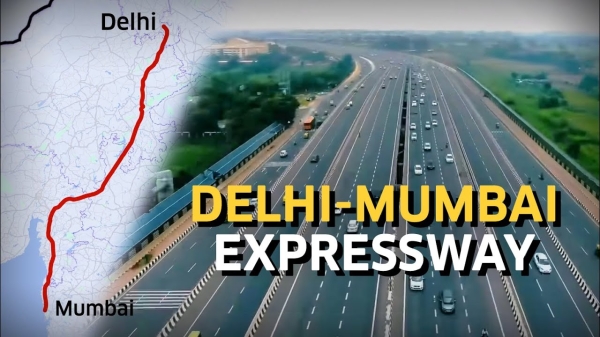
Route Mapping of the Delhi–Mumbai Expressway
Delhi, Haryana, Rajasthan, Madhya Pradesh, Gujarat, and Maharashtra are the major states that are located along the Delhi–Mumbai highway route.
Cost of Delhi-Mumbai Expressway
The approximate cost of building the Delhi-Mumbai Expressway includes the cost of land acquisition. According to the Bharatmala Pariyojna Phase-1 plan, the project is being carried out. Out of the 1380 km that have been awarded per the contract and are currently being built, 1200 km will be the overall construction area, according to a statement from the government.
The government will carry out the building of the 52 construction packages for the Delhi–Mumbai highway.
The Delhi–Mumbai motorway route would be financed by a Special Purpose Vehicle (SPV) established by India's national highway body. On August 29, 2020, the SPV will be known as DME Development Limited. DMEDL has achieved AAA ratings from CARE, CRISIL, and India Ratings, according to a recent NHAI release.
DMEDL has raised about Rs 9731 crore, according to NHAI, to help pay for a portion of the Delhi–Mumbai motorway project. SBI provided the largest portion of the financial support, or Rs 5,000 crores. The Bank of Maharashtra, PNB, and Axis Bank are further significant investors in the DMEDL. With roughly Rs 10,400 crores, a segment of the highway over 160 km long that crosses through Haryana is being built.
The highway will reduce vehicular pollution in Delhi-NCR by 27%, and the route will benefit 73 communities, according to the Union Ministry. With the aforementioned Rs 16,600 crores, a 375 km stretch of the motorway would be built in the state of Rajasthan. The route will go via a number of locations, including Alwar, Dausai, Bharatpur, Kota, and Madhopur, among others.
There will be numerous bridges built over rivers including the Banganga, Mezriver, Chambal, etc. Most of the state's bridges are currently being built. By August 2022, it is planned for the Alipore (Gurugram)–Dausa (Rajasthan) leg to be open for traffic. The state of Madhya Pradesh would be covered by 250 km of the Delhi–Mumbai highway route. The expressway's estimated construction cost is Rs. 8,500 crores.
According to the officials, 106 km of the 250 km expressway's planned route have already been constructed, including sections through Ratlam, Jhabual, Mandsaur, and other locations in the state. In Gujarat, a distance of 426 kilometers, a total of 60 bridges, 17 flyovers, 17 interchanges, and 8 roadways over bridges will be built.
Tolls on the Delhi–Mumbai Expressway
Based on the commuter's travel distance, the toll tax payments will be collected at the exit. Using a rate of Rs. 2.19 per kilometer, the expected toll tax for the Sohna-Dausa route is Rs. 460. Given that the Delhi Mumbai Expressway will be one of India's longest motorways, it will have more than 90 exit points accessible.
Another benefit is that the motorway will have India's first ever electrified lane. The Delhi Mumbai Expressway's remaining section's toll prices will be made public soon.
When should the Delhi–Mumbai Expressway be Completed?
The construction of about five greenfield motorways, including the Delhi–Mumbai Expressway, will be finished by the end of December 2023, according to the Union Minister for Road Transport. The journey from Mumbai to Delhi will take only 12 hours once the Delhi Mumbai Expressway project is completed.
The Advanced Traffic Management System (ATMS) on the E route has been put out to bid by the National Highway Authority of India (NHAI). The National Highways of India have different ATMS equipment installed by the NHAI. These tools will be useful.
These tools will aid in the rollout of Intelligent Transport Systems on the nation's highways. The ITS will make driving more sustainable and efficient, increase traffic safety, and make travel less stressful.
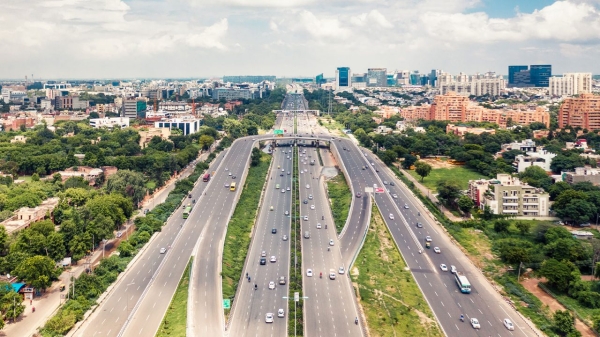
Special Highlights of the Delhi–Mumbai Expressway
The Delhi Mumbai Expressway map has a variety of unique features, including the following:
Roadside Amenities: There will be 93 locations along the Delhi-Mumbai Expressway with a variety of roadside amenities, including hotels, ATMs, food courts, single-brand restaurants like Burger King, Subway, and McDonald's, as well as retail stores, gas stations, and charging stations for electric vehicles.
For the first time, the Mumbai to Delhi highway will include fully functional trauma centers and helipads every 100 kilometers to provide medical assistance to travelers who are injured in accidents.
Environmental Considerations: The Delhi–Mumbai Expressway would be a route that is friendly to the environment. Twenty lakh trees would be covered by the motorway. Every 500 meters along the entire span, these trees will be maintained using the drip irrigation water technique while also being harvested rainfall. Through the planting of trees, it is estimated that the highway will reduce carbon dioxide emissions by around 850 million tonnes. By easing traffic congestion, the initiative should save about 32 liters of fuel. The roadside lights along the Delhi-Mumbai expressway will be operated with a combination of solar power and state networks.
A section of the Delhi–Mumbai motorway is intended to become an electric highway, or e–highway, according to the union ministry. Both Buses and commercial vehicles can travel at a speed of 120 km/h on this route. Since big trucks will no longer need to use diesel fuel, the expressway's speed and lack of traffic will reduce logistical costs by almost 70%. Out of its eight lanes, the Delhi–Mumbai motorway will also include four lanes specifically designated for electric vehicles.
In addition, a 1.5-meter-high security barrier will be erected on both directions of the motorway route, and the toll booth will be placed inside slip lanes.
Wildlife Crossings: There will be five natural wildlife crossings on the eight-lane wide Mumbai Delhi motorway, including Mukundara National Park, Ranthambore National Park, and Sariska Tiger Reserve, on various segments totaling about 2.5 kilometers in length. The Mukundara National Park and Matheran Eco-sensitive Zone tunnels, which will be the first 8-lane wide tunnels in India, would be the key animal crossing attractions. The longest length of the Delhi–Mumbai Expressway will have the first animal footbridges in the nation, which are specifically intended to keep the wildlife area unspoiled and unaffected by project development.
Also Read: Delhi-Jaipur Expressway likely to become country first e-highway soon




